info@teamchallenge-company.co.uk
03300 04 09 03
As part of our summer series on the psychology behind team building, this week I’m looking at MBTI, also known as the Myers-Briggs Type Indicator. You’ve probably come across it before. It’s one of the most widely used personality tools in the world and for good reason.
MBTI is actually based on the work of psychologist Carl Jung in 1921. Jung explored how people have different ways of perceiving the world and making decisions, but he didn’t create a formal test. The MBTI name comes from the work of a mother and daughter duo, Isabel Briggs Myers and her mother Katharine Cook Briggs. In the 1940s they developed a practical questionnaire based on Jung’s ideas to help people find roles suited to their personality.
The MBTI tool sorts personalities into four pairs, which combine to give one of 16 personality types:

To determine someone’s MBTI type, individuals usually complete a questionnaire that explores how they prefer to communicate, take in information, make decisions and organise their daily lives. The results provide insight into how someone works best and what they need from others.
In a team setting, MBTI can help people recognise not only their own strengths but also those of their colleagues. For example, some team members may thrive on detailed planning while others prefer to look at the bigger picture. Some might favour quick decisions while others need time to reflect. There is no right or wrong, but the differences can cause tension if they’re not understood.
At Team Challenge Company, we strive to design team building experiences that do more than bring people together for a fun day out. The most successful teams are those where people understand each other’s working styles and communicate openly.
If you’d like to explore how your team could benefit get in touch - we’re here to help.
As part of our summer series exploring the psychology behind team building, this week I’m highlighting the ‘GRPI model’.
GRPI was developed by American organisational consultant Richard Beckhard in the 1970s and is a useful tool, amongst many others, for understanding what helps teams succeed and what holds them back.
GRPI stands for Goals, Roles, Processes and Interpersonal Relationships. These four layers are the building blocks that support how well a team works together. If a team is underperforming or stuck, there’s a good chance that the issue lies in one of these areas.

Start with goals. If the team doesn’t know where it’s heading or what success looks like, it’s hard to move forward. Next, look at roles. Are people clear about who is responsible for what? If not, confusion and duplication can creep in. Then there are the processes. This involves the ways of working, decision making and communication. Even the most talented teams can falter if their systems are inefficient. Finally, interpersonal relationships. Trust, respect and openness are vital.
If you feel your team needs better clarity and alignment we might suggest focusing experiences which focus on structured problem-solving. If the team needs to strengthen relationships, then we’ll lean into collaborative challenges or experiences which prioritise communication.
At Team Challenge Company, we start planning any team building experience around the outcomes you need for your teams. To understand how your team could benefit, contact us for more information.
When a team isn’t performing well, it’s rarely about a lack of skill. From my experience over the past twenty years, the issues often lie in how people interact and collaborate day-to-day.
We’re continuing our focus on team building models with Lencioni’s ‘Five Dysfunctions of a Team’.
Lencioni’s model doesn’t just identify what’s going wrong. It shows how each behaviour affects the next, gradually weakening how a team functions. The issues often build quietly, which makes them easy to miss. For any team looking to grow or improve how they work together, it offers a simple and useful place to start.
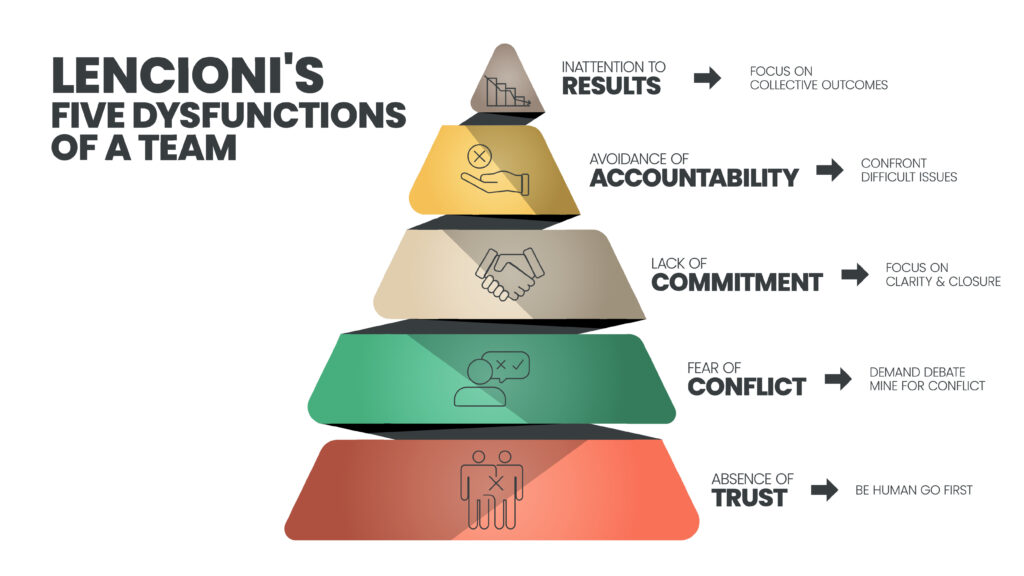
The Five Dysfunctions of a Team according to Lencioni are:
This isn’t about whether people get on socially. It’s about whether they feel safe enough to be open, admit mistakes, ask questions or say ‘I need help.’ Without trust, everything else suffers.
Lack of trust often leads to a fear of conflict. People stop challenging ideas or giving honest feedback. You end up in meetings where everyone nods, even though half the room disagrees. It keeps things smooth on the surface, but problems bubble underneath.
When people feel like they’re not being heard, they won’t fully support the decisions being made. They might go along with things to a certain point but will hold back when it comes to taking action. This creates hesitation and lowers motivation. People feel unsure about what they are working towards or how the team has reached its decisions. That uncertainty then makes it harder for the team to stay focused or hold each other to account.
Which brings us to the fourth dysfunction: avoidance of accountability. Without clear commitment, team members are less likely to challenge one another or flag issues early. That can lead to lowered standards and missed deadlines.
At the top of Lencioni’s model is inattention to results. This is where individual goals and personal success start to take priority over what the team is trying to achieve together. People focus on their own tasks, recognition or position, rather than the group’s shared outcomes. Collaboration starts to drop off and progress begins to stall, but it’s not always obvious why. Everyone appears to be working hard, but the team’s goals still feel distant and difficult to measure. Without a clear focus on collective success, it becomes harder to stay on track or measure what progress really looks like.
We often see Lencioni’s theories come to life during team building sessions. The behaviours he describes don’t just show up in meetings, they can appear in how teams communicate, how they listen and how they respond under pressure in any environment.
The right team building experience can create a space where people start to open up, listen differently and notice how they work as a group. These moments build trust and make it easier for honest conversations to happen. If you’re interested in exploring how this might support your team, feel free to get in touch with us.
As part of our summer series exploring the psychology of team building, Team Challenge Company co-director Gerard Crowley takes a look at one of the most well-known theories in team development and reflects on its relevance today.
Whether you're leading a new team or managing one that's been together for years, understanding how teams grow and change can be a real advantage. One of the best-known models in team psychology comes from Bruce Tuckman, who in 1965 identified four key stages of team development: Forming, Storming, Norming and Performing. A fifth stage, Adjourning, was later added to reflect the reality of teams wrapping up once their task or project is done.
At Team Challenge Company, we recognise that there is plenty of debate around models like this. Some argue they oversimplify the messy and unpredictable nature of real-life teams. Others feel that modern teams, particularly those working remotely or across different time zones, don’t always follow such clear stages. These are fair points. But I still believe Tuckman’s model remains useful. It offers a shared language for understanding group dynamics and gives team leaders a framework to reflect on how their team is functioning.
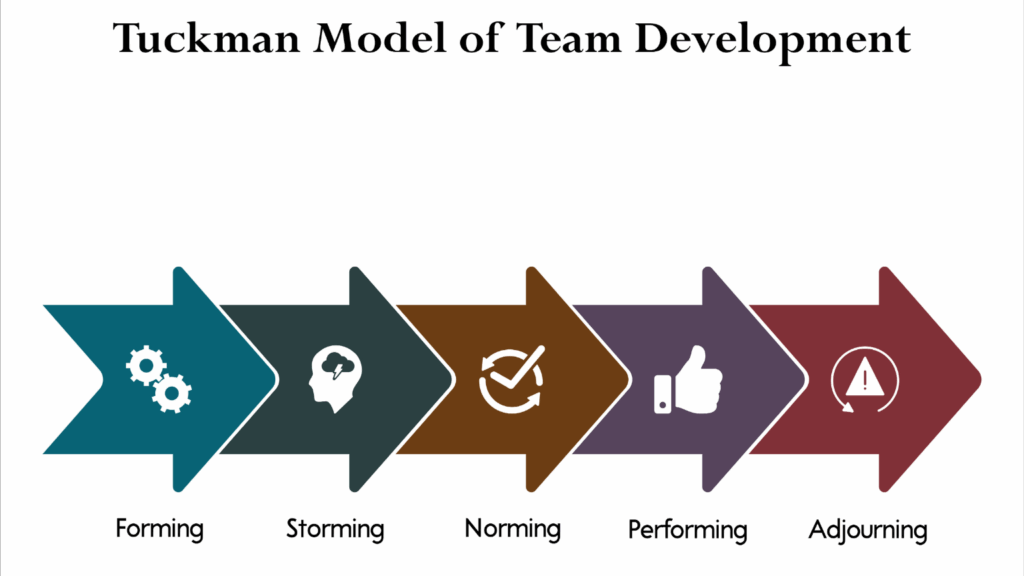
The stages themselves are easy to relate to:
Forming is the early phase, often polite but uncertain. People are finding their feet and looking for direction.
Storming may follow as tensions start to show. Disagreements, frustration or power struggles may surface.
Norming is when the team begins to settle. There’s more trust, better communication and a growing sense of shared purpose.
Performing is where the team works well together, solves problems effectively and stays focused on goals.
Adjourning, often overlooked, marks the end of the team’s journey. This stage can bring reflection and closure.
No model is perfect, but Tuckman’s remains a helpful tool. It reminds us that conflict is natural; progress takes time and team development is a process. For team leaders, this insight is often enough to start asking better questions and leading with a clearer purpose.
Taking part in the right engagement activity at the right time can help teams navigate these stages more smoothly. If you'd like to learn more or discuss what might work best for your team, please contact us.
For this week's Industry Insight, Team Challenge Company co-director Gerard Crowley shares his thoughts on psychology-based frameworks and their relevance for businesses today.
At Team Challenge Company, we know there's plenty of debate around the effectiveness and relevance of certain psychology-based team building models. Having trained in Belbin and seen it support leaders across various industries, team sizes and demographics, I believe Belbin remains as relevant today as when Meredith Belbin first shared his model with the world in 1981.
If you're new to Belbin, it can be a powerful tool for understanding team dynamics. I believe it offers a flexible framework to support learning and development, rather than being a rigid set of rules.
This summer, we have been sharing articles on Belbin's Team Role Theory and this week we're continuing with two more role categories that Belbin proposed in addition to action-oriented roles: social roles and thinking roles.

According to Belbin, a Team Role is a natural tendency to behave, contribute and interact in a particular way within a team. Each role brings strengths and weaknesses. Teams tend to perform better when all roles are represented and well balanced.
To identify which roles people naturally take on, Belbin recommended a mix of self-assessment and peer feedback. This helps teams build a clearer picture of an individual's true behaviour, not just how they perceive themselves.
Most people display a blend of roles rather than just one and may take on different roles depending on the task or situation.
Social team members help build trust and encourage cooperation. Belbin identified three key roles in this category:
These team members focus on analysis and innovation. Their thinking often helps shape strategy and solve complex problems. The three roles are:
Belbin's model continues to be relevant because it's simple, flexible and based on real team behaviour. It helps you understand the dynamics in your team and spot any gaps. By encouraging teams to value a mix of working styles, the model supports stronger communication, better decision-making and healthier working relationships.
Whether you're leading a small project group or managing a large organisation, understanding these roles can help your team perform at its best.
Our team building experiences are designed to suit a variety of roles and personalities. If you'd like to learn more or discuss what might work best for your team, please contact us.
This summer, we're sharing a short series of articles exploring one of the most influential models in team development - Belbin’s Team Roles. Following the recent passing of Dr. Meredith Belbin earlier this year at the age of 98, this series aims to highlight the ongoing relevance of his work and the practical value it still offers to teams today.
There’s plenty of debate around using different team building models. We believe these tools are can be helpful as a jumping off point rather than a strict rulebook.
Dr. Meredith Belbin was a British researcher, best known for his work on team behaviour. In the 1970s, he led a study at Henley Management College which looked at what makes teams successful. His research identified nine different roles that people naturally take on when working with others. These aren’t job titles, but patterns of behaviour that help teams perform at their best.
For team leaders, Belbin’s model is a useful way to understand the mix of roles. It can help with building balanced teams, assigning responsibilities and improving how people work together. The aim isn’t to label people but to make it easier to spot what each person brings and where there may be gaps.

This first article in the series looks at the action-oriented roles. These are the roles that focus on getting things done.
Our team building experiences are designed to suit a variety of roles and personalities. If you’d like to learn more or talk through what might work best for your team, contact us.
In a recent Industry Insights article, we shared stats from Gallup’s State of the Global Workforce 2025 report. The key takeaway? Employee engagement is low and slipping further. But while the trend is global, the actions you take at a team level can make a real difference.
Here are some practical tips team leaders can implement to improve engagement right now.

People want to know their work means something. Make time to show how individual tasks link to wider goals. This doesn’t need to be formal. A quick mention in a team meeting or one-to-one can help people see the value in what they do.
Most people are more engaged when they use their strengths at work. Pay attention to what each individual team member does well. Delegate accordingly. A bit of flexibility can go a long way in helping people feel trusted and capable.
Ongoing check-ins build trust and show you care. They don’t need to be long or formal. A few minutes to ask how things are going can open up important conversations. Listen more than you speak. And avoid turning every catch-up into a to-do list review.
Give people opportunities to learn and grow. This might mean offering training, pairing them with a colleague or letting them try something new. Development doesn’t always mean promotion - it can be as simple as learning a skill or taking on a new challenge.
How you show up matters. Engagement is shaped by day-to-day behaviour, not one-off gestures. Be available. Follow up. Celebrate progress. Ask what people need and act on it.
If you want your team to be switched on, you need to be too. Show interest in people. Be open about challenges. Be the kind of leader you’d want to follow.
Looking for new ideas to establish a stronger, more engaged team? Take a look at our team building experiences or get in touch for a chat.
Understanding individual team members is one of the best ways to improve how the overall team works. ‘Colour Code Analysis’ is a tool that can helps teams do just that.
According to the ‘Colour Insights Discovery’ model, each person’s personality preferences and behaviours can be linked to one of four colours. Once you know your own colour, the model suggests this can help you to start to see why you work the way you do and then how those in your team work.

Red types are confident and competitive. They’re results-driven, direct and enjoy taking charge. In a team, they push things forward and keep goals in sight. But, they may need to slow down and listen more to others’ input.
Yellow personalities are sociable and enthusiastic. They bring energy, positivity and creativity. They’re great at building relationships and keeping morale high. In teams, they may need support with staying on track and focusing on detail.
Green represents calm, caring and dependable traits. These individuals are loyal, supportive and good listeners. They value harmony and tend to avoid conflict. In teams, they may need encouragement to speak up or challenge ideas.
Blue types are precise and analytical. They like structure, logic and well-thought-out plans. They bring rigour and clarity to team decisions. However, they may need to be mindful of being overly critical or cautious.
It all starts with awareness. Once you know your own colour and those of your team, you realise that not everyone sees things the way you do. That one team member who always asks for the detail isn’t being difficult. They’re just wired differently. That team member who jumps into action without a full plan? Same story.
Once you understand someone’s colour, you can make small changes in how you work with them. Maybe you give more structure to someone who likes detail. Or hold back a bit when someone prefers space to think. When communication improves, so does collaboration.
Once you have a better understanding of your team, it’s easier to determine how they work best together. Our experiences are designed to cater to a variety of personality types and learning styles.
Want to see your team working together in full colour? Get in touch and let us help you.
Strong teamwork is key to getting results in any organisation. When people communicate well, support each other and find solutions together, everyone benefits. Here are five practical ways to help your team work better together.
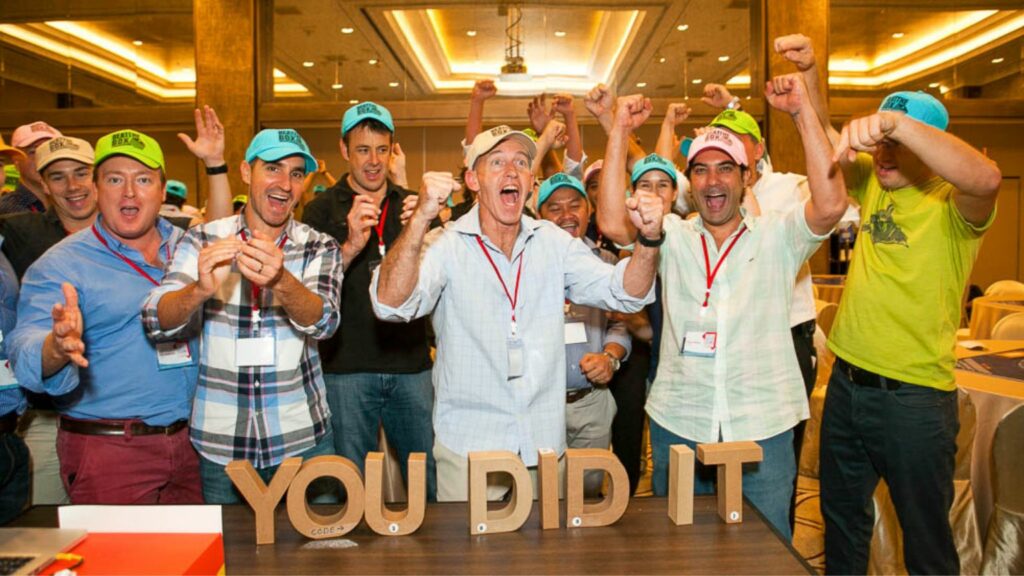
Working alone too often can make people feel isolated. With hybrid or remote working now more common, it’s even more important to create chances for your staff to connect.
Look for opportunities to bring people together. This might mean more regular group meetings or setting aside time for informal catch-ups. These moments help people feel included and valued, which can lead to better focus and productivity.
In the office, think about where people sit. Changing desk locations every so often can help your employees build new relationships and encourage fresh ideas.
Micromanaging your team isn’t just frustrating for your team, it also wastes your time. When people are constantly waiting for instructions, they’re less likely to work together effectively.
Instead, match tasks to each person’s strengths and give them space to take the lead. When individuals feel trusted, they’re more likely to take initiative and support their colleagues, which builds a stronger workplace culture.
Disagreements happen in every workplace. If they’re not dealt with quickly, they can lower morale and slow down progress.
Most conflicts come from misunderstandings or differences in opinion. As a leader, your role is to listen, stay neutral and help your team find a way forward. Having a clear process in place for resolving issues can make a big difference and help you get back on track sooner.
People work better when they feel motivated and supported. Giving your team chances to develop their skills helps them reach personal goals while also improving how they work together.
This might mean offering training, mentoring or simply checking in regularly to understand their career ambitions.
If your staff feels disconnected, a team building day can be a great way to reset. Whether your goal is to boost communication, creativity or spot potential future leaders, a shared experience can help break down barriers and build trust.
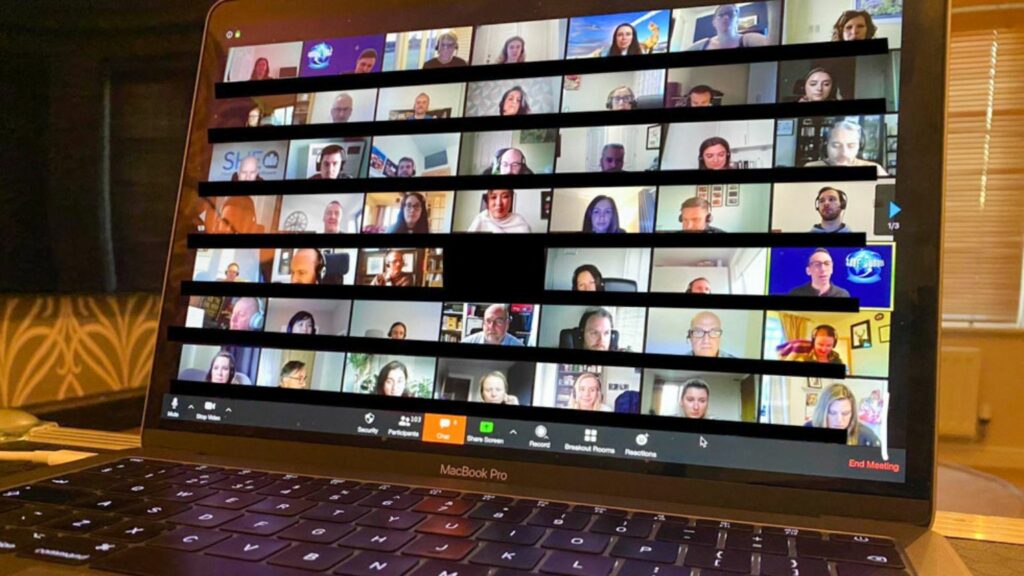
Looking to bring your team closer? Get in touch to see how our bespoke team building experiences can support your business.
The conversation around AI in the workplace has moved beyond automation and efficiency. It's now about how humans and machines can work side by side. According to new research conducted by Censuswide for L&D consultants, Hemsley Fraser, 71% of UK business leaders see AI as valuable to their organisation. At the same time, 67% agree that ‘human skills’ like critical thinking, collaboration and innovation are essential for success in an AI-driven world.

Despite an awareness about the importance of these skills, many UK businesses are struggling to upskill their people in these areas. The survey shows that constant workplace disruption is taking its toll. More than a third of employees say they feel tired, isolated and less effective due to frequent reorganisations and digital transformation. Fatigue like this can make people less open to learning and resistant to new ways of working.
The research also reveals clear differences in how people prefer to learn. Older employees are more likely to trust specialist learning providers, while younger staff are turning to the online offerings of established tech companies for learning inspiration. There are also gender differences - more women look to their peers for ideas, while men are more likely to go online. These insights show that varied learning options are key to engaging everyone.
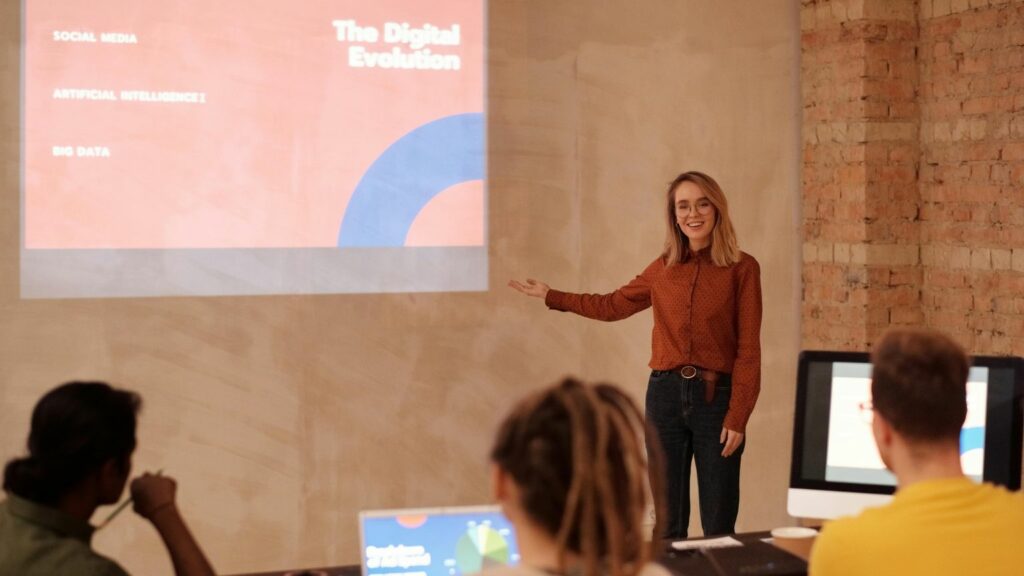
However, there’s encouraging news too. Businesses are beginning to adopt more creative and blended learning strategies. In fact, 28% of those surveyed say that combining online learning with in-person experiences delivers the best results. These approaches allow teams to learn in flexible ways, while still benefiting from the face-to-face connection that builds trust and motivation.
As AI continues to reshape the way we work and raise questions about job security, the value of human connection in the workplace is only growing. Team experiences that support the very human skills of collaboration, creativity and leadership are needed more than ever in the age of AI.
Contact us today to discover how our team experiences can boost your team’s skills for an AI-driven future.